Summer Solstice
Bonfires of St. John
Alicante
Adaptation of old traditions
The tradition of the Bonfires of St. John, Las Hogueras de San Juan , goes back centuries.
Bonfires of old furniture and the sort of things we would leave for council clean-up week were gathered together as kindling on the eve of the summer solstice on 20th June in a traditional manner called 'La plantá'.
After four days of fiesta, the bonfires would be lit ceremoniously for 'La cremá' (the burning) on the 24th.
This was certainly once a pagan celebration.
Happily, the dates coincide with the Catholic feast of St. John, whose name has been appended to sanctify the celebrations.
In like manner, for the Saint’s Day kindling for the bonfires is no longer the stuff of left-overs. Instead, in modern day Alicante, this tradition has risen to a state of art.
What are burned now are magnificently crafted papier-maché statues, “Las Hogueras”, representing political satire, or social comment on issues of the times.
'Las Hogueras'
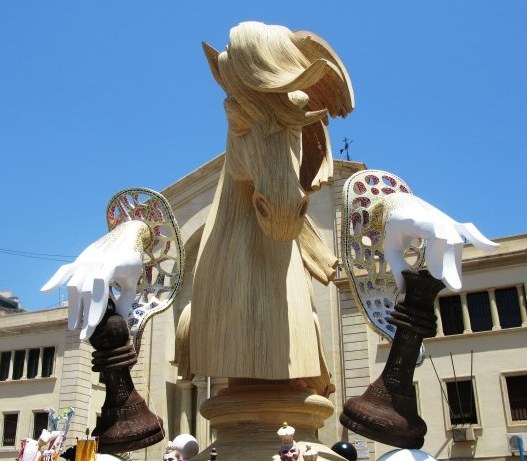
Statues like these chess-playing horse are designed and crafted at great expense, and are situated around the city some weeks earlier.
People walk around the city inspect them and map out their route for “La Crema” which is when the fires are lit sequentially.
If you can find your way through the crowds, it is possible to see several set alight.
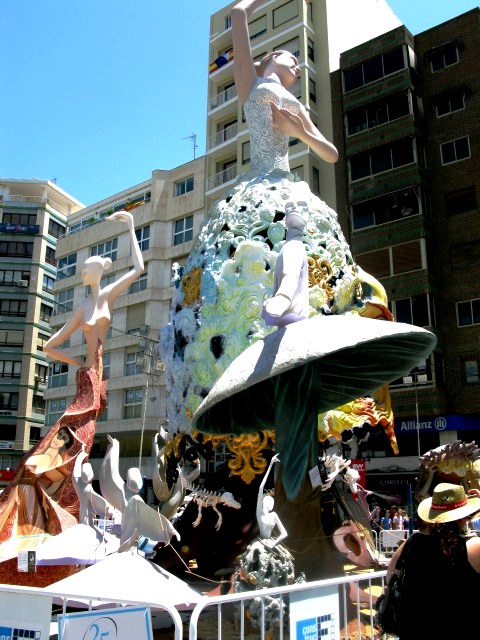
Often standing six or eight stories high against the buildings, the detail and craftsmanship of each Hoguera reflects the fierce competition to be the winning statue – which is NOT burned, but gains a place in the Hogueros museum.
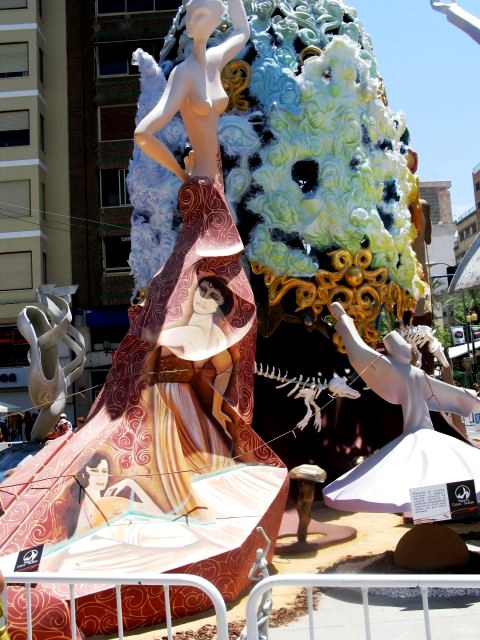
These magnificent bonfires require considerable fund raising. This is done by local associations or “commissions” that represent a particular locale within the city. In Alicante there are about 86 commissions. To fund their constructions, the members or Fogueros host all sorts of fund-raising events during the year.
Many announce their Foguera in beautiful illuminations strung across the plaza or street junction.
Some of the statues are smaller, but all have great detail within.
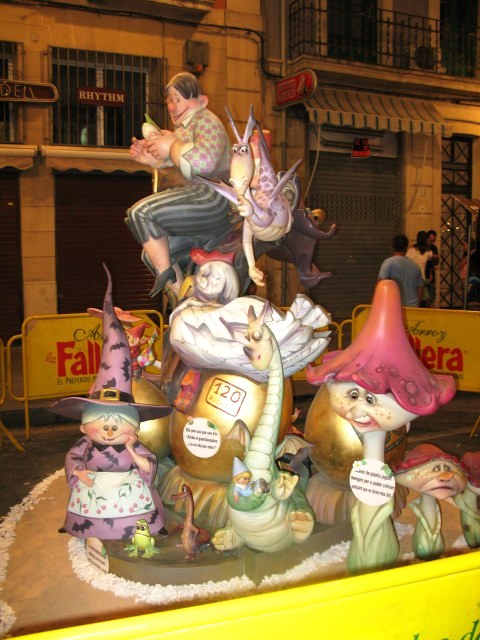
…while others are as tall as the buildings beside which they sit.
This one was located at the end of the famous harbour walk, the Paseo de la Explanda,with its coloured ripples of marble.
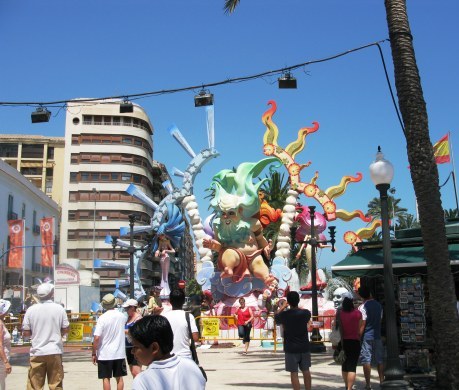
Alicante Bonfires of St. John night market
The final night celebration is at the end of the impromptu street market that is held nearby one of the main bus and train stops that connect the city to the nearby beaches and suburbs.
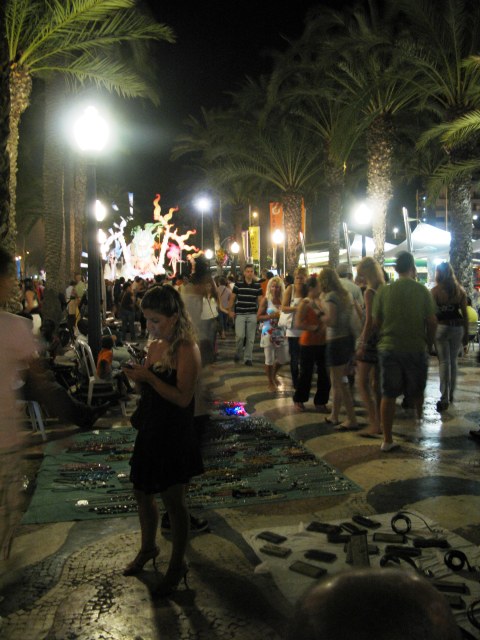
The Paseo de la Explanda night market gets increasingly crowded as it gets later in the night.
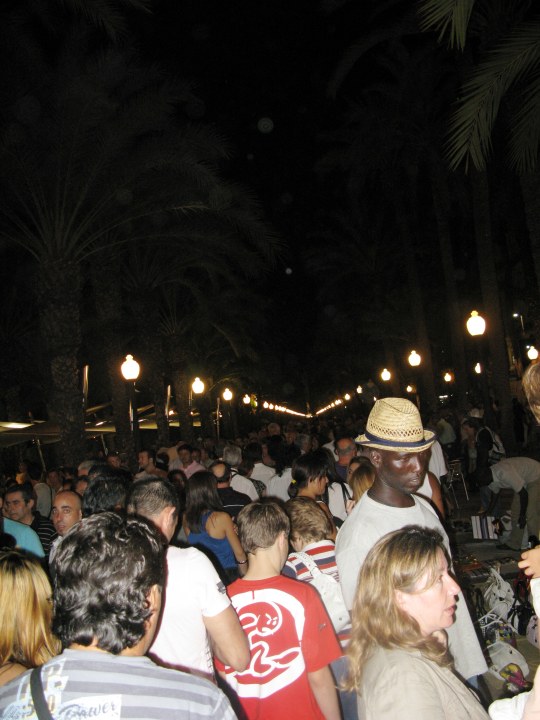
Street parties for locals during the Bonfires of St. John
During Las Hogueras de San Juan (The Bonfires of St. John), throughout the city there are many cordoned off areas which form a barraca .
Access is limited to Barraqueros, the local residents of a community who raise money all year for the big neighbourhood party – or a group of friends who do the same to hold a barraca where they can eat, drink, dance, and celebrate friendship together, apart from the masses.
A barraca is a group of friends who aren’t
active in all the events of Las Hogueras de San Juan. They just seize the opportunity to come together like this during the festival.
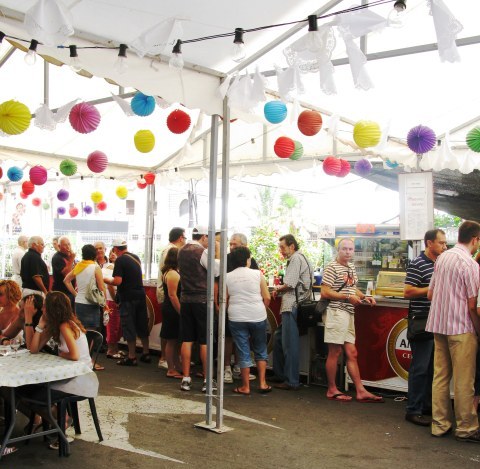
The barraca is big business for local catering, and its organisation is anything but haphazard. There are tables well set, a bar (of course), usually also a band or orchestra,and a dance floor or section for dancing.
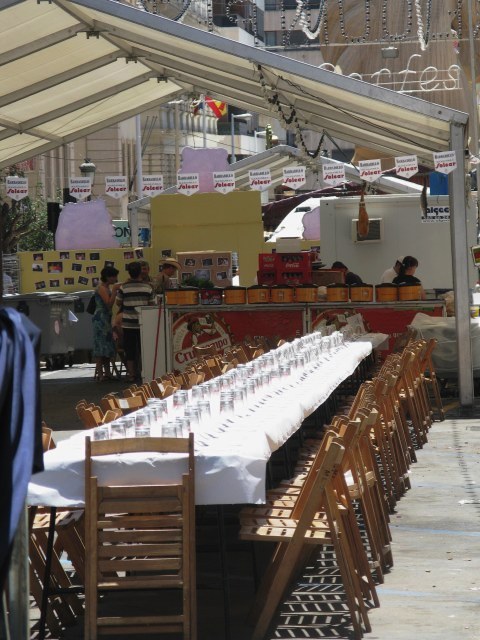
At night the barraca comes alive, with games for the children….
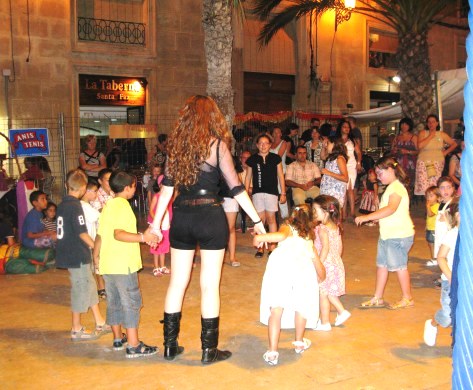
…tempting even the shy ones to join.
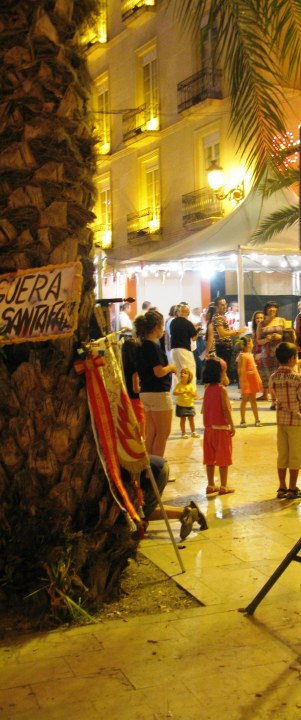
Mascletá: the excess of fireworks on Luceros Square, Alicante
My Spanish friends laughed as they told me that it is typically Spanish to love fire and loud celebrations with firecrackers.
In Alicante they take this to extreme.
During the fiesta of Bonfires of St. John, every day from the 20th to 24th June at 2pm they hold a well attended, crowd-gathering mascletá in the city centre on Luceros Square.
This is a series of firecracker explosions that are increasingly loud. They fill the sky with their residue, and nearly shatter your ear-drums.
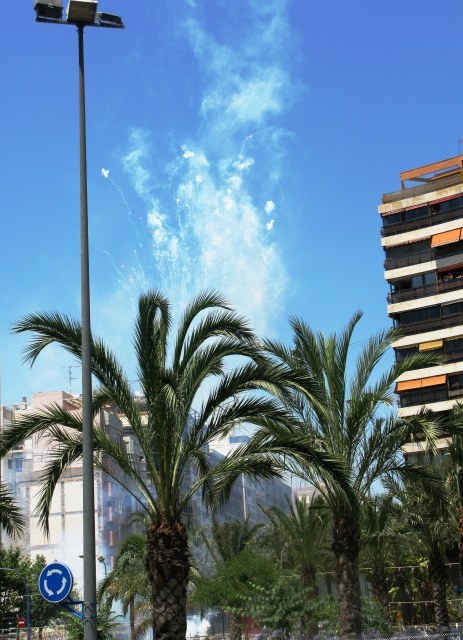
As one massive explosion after another is ignited, the crescendo is relentless.
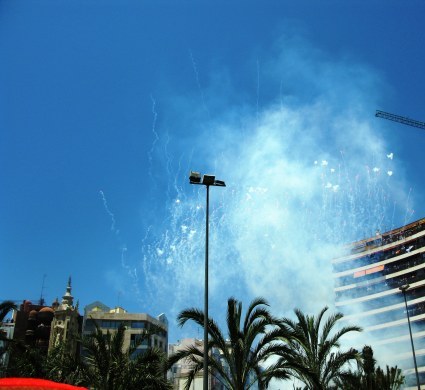
I was told that the worst thing you can do is block your ears. Apparently this may cause the eardrum to rupture because you need to release the pressure of the shock-wave of sound that hits you.
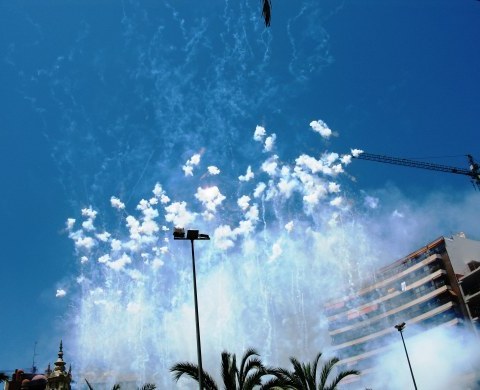
The recommended thing is to scream - as this outflow of air is said the equalize the impact of the shock wave which you feel as a physical impact against your whole body.
Certainly any scream becomes white sound, for you can hear nothing but exploding gunpowder.
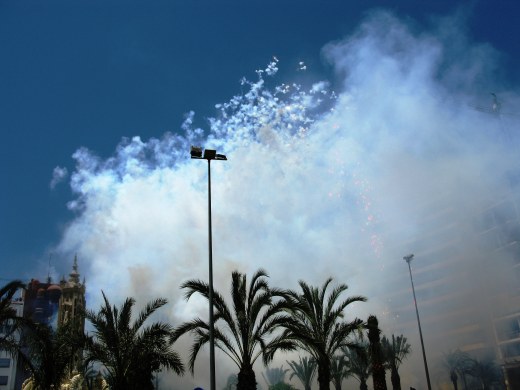
What amazed me was that there were young children there, totally unphased by what was the equivalent of mortar rounds going off 100 metres away.
Explosions filled the early afternoon sky with puffs of white and clouded the whole square with murky gunpowder smoke.
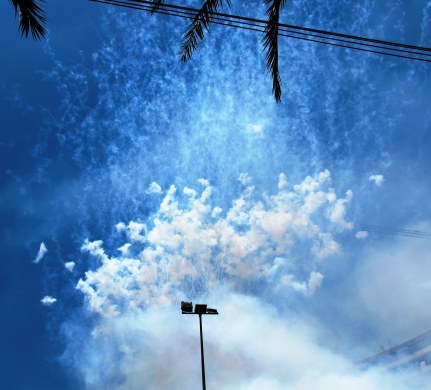
It was then that I decided that I was definitely not Spanish, though apparently my concert pianist ancestor who I am told looked a lot like me and who captured the heart of a Spanish Prince long, long ago, may have been.
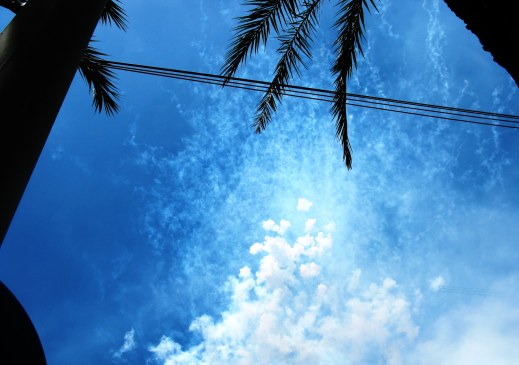
My friends were sorry that my first experience of the mascletá had been “spoiled” by the fact that there was that year a fault in the pyrotechnics and there had been a slight pause in the build up of increasing power.
That pause had been for me a welcome one, and I assured them it had definitely not ruined the experience.
Street fireworks during Bonfires of St. John in Alicante
Fireworks are a constant throughout the whole festival of the Fires St John and continue in the weeks afterwards.
Here, you can buy your fireworks in the street from any of a number of street stalls.
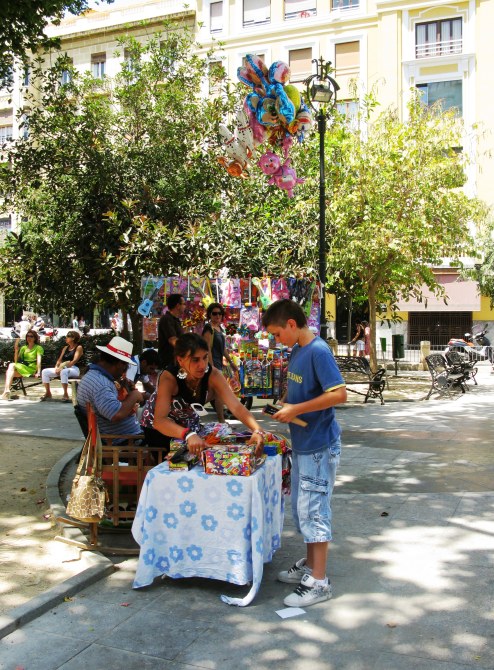
Street Parades during the Bonfires of St. John in Alicante
At night there are parades through different sections of the city.
On the 21st, it is the parade where the various beauties and their maids of honour appear in traditional costume.
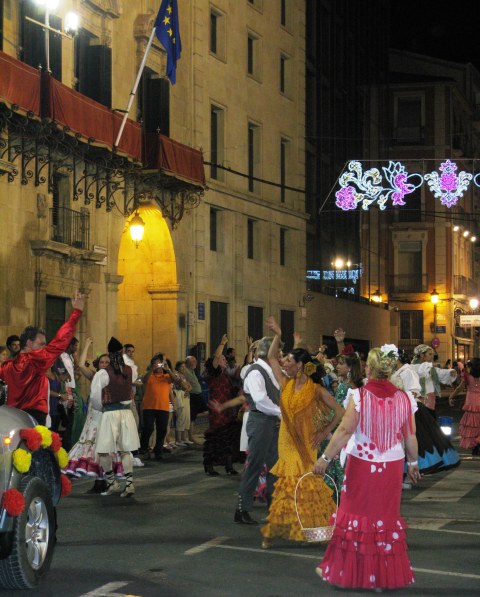
On the 23rd, it is the international flokloric dance parade, with troups representing countries from around the world.
There are traditional Spanish dancers in full costume – both young and old…some from Argentina.
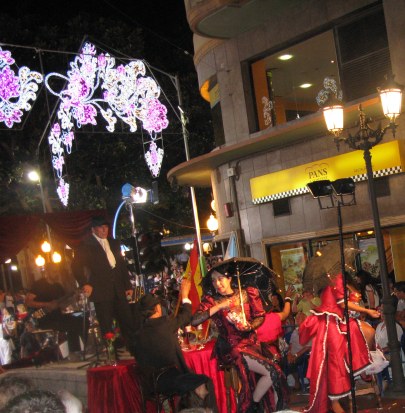
There were some young Flamenco students.

Brazilian dancers were dressed in not a lot…
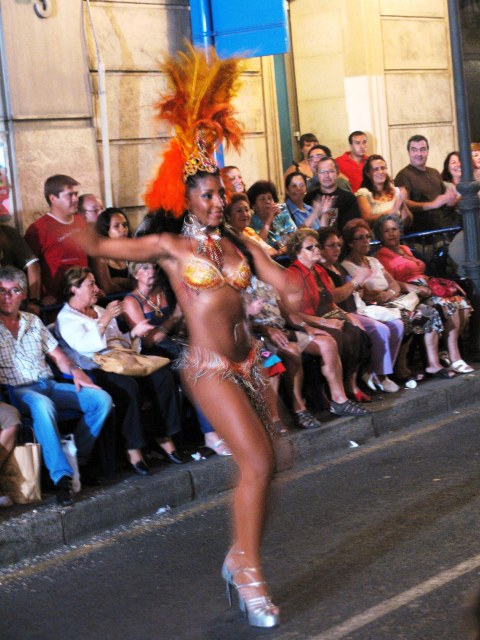
By contrast, there were others in traditional regional costume.
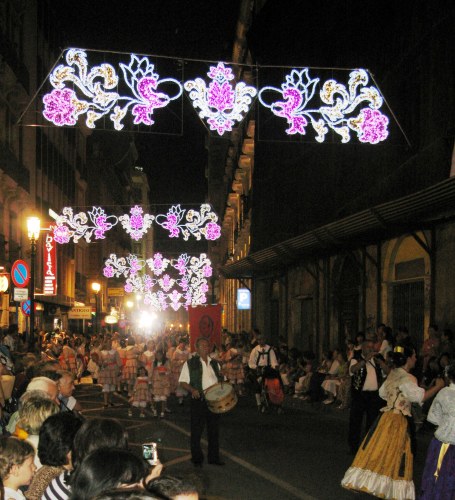
The youngest costumed dancers ride in full mantilla be-decked floats.
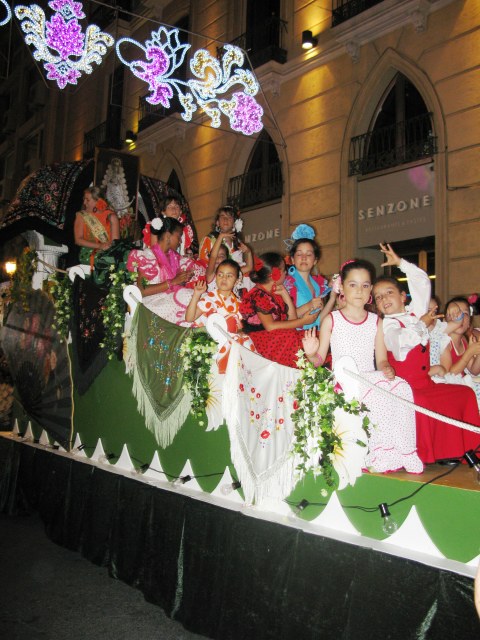
…as do some of the beauties of other nations with Spanish roots.
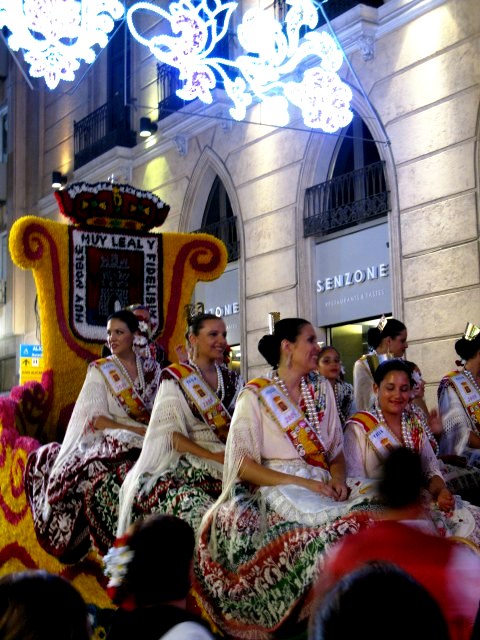
Apart from the big parades, there are smaller impromptu affairs winding through the laneways of the city - often taking you unawares.
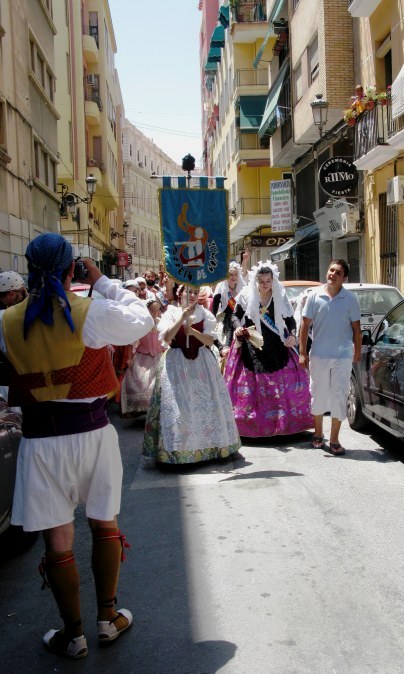
In the words of Mike Ditka:
If you are not in the parade,
you watch the parade.
That’s life.
Those not in the parades in Alicante wait to watch, and so the route is flanked with crowds of locals and tourists.
Here people waited behind the barrier to their barraca.
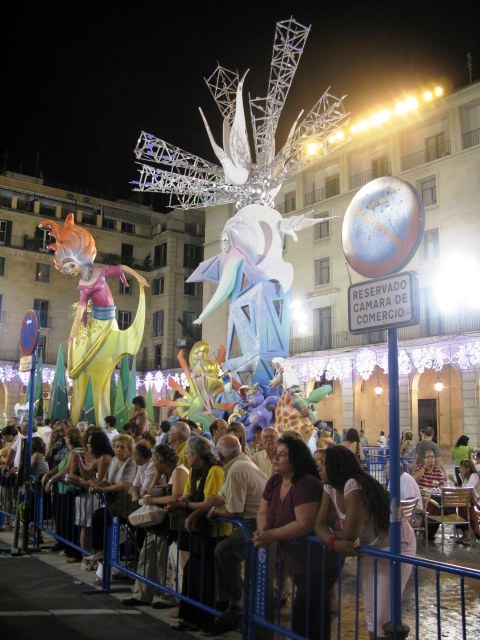
The relationship of Alicante with the Moors is enacted every year in a Moors and Christians festival – but during Las-Hogueras de San Juan it is a more peaceful representation.
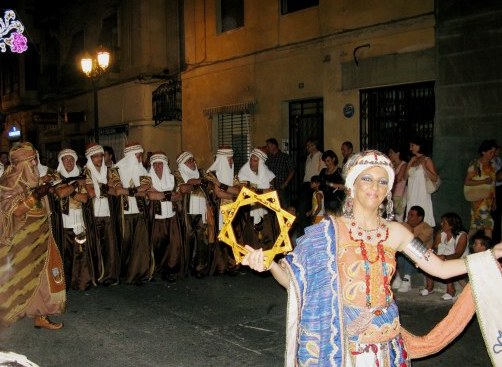
The occupation of Alicante by the Moors lasted from 718 to 1492, and the mark of this is everywhere reflected, not the least in the Castle fortress that is embedded into the surrounding cliff tops.
As Victor Hugo said:
One can resist the invasion of an army
but one cannot resist the invasion of an idea.
The mark of Moorish influence is still ever evident in Alicante and the relationship is kept vividly in local memory.
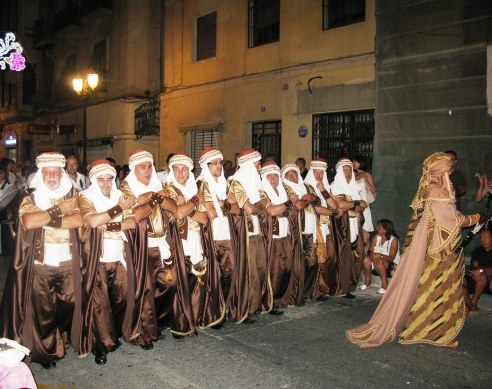
The first illumination of the Bonfires of St. John in Alicante
The lighting of the fires on the night of the 24th June is heralded by massive fireworks, but first there is a dramatic beginning.
The city lights are turned off and the illuminated Castle fortress that guards the port and city, looms even larger in the night sky.
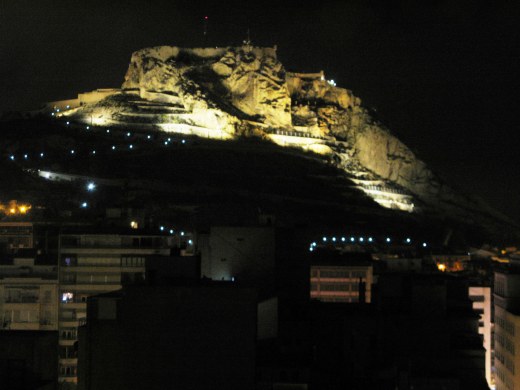
Then come palm-shaped fireworks ending in a shower of stars.
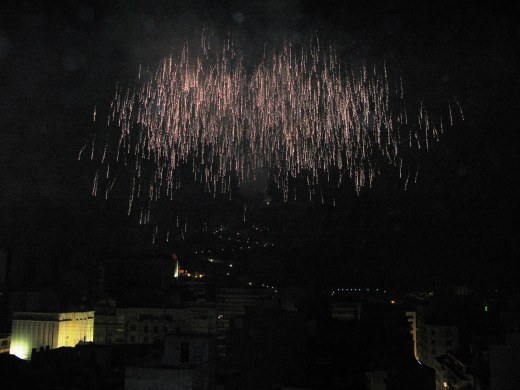
So is announced the start of the lighting of the Bonfires of St John, Las Hogueras de San Juan. They are then all sequentially lit.
Fire blankets and firemen at Las Hogueras
Before the big sequential bonfire lighting, the facades of buildings are draped with protective fire-resistant guard cloths, that until that night hang beside them.
The fires are so close it is amazing that such protection is enough for the facades.
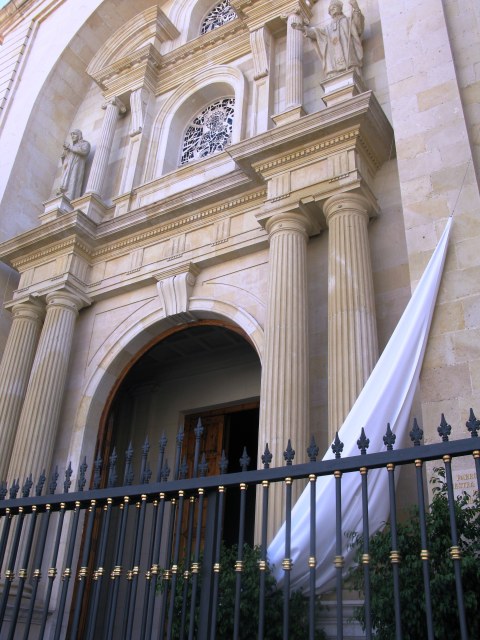
Before the first lighting, you take up position – if you can – closest to the statue which you have chosen.
In streets jammed with a mass of humanity, this is no easy task, and actually meeting your friends at an appointed spot is a challenge itself.
To give some idea of the noise and the crowds as the bonfires set off their own fireworks - here is a video from 2023 of the burning of the statues of St John
I was never close enough to see the fire actually lit, though I could see the flames – but the plus side was that I was not in the firing line for the traditional hosing down of the crowds by the firemen – the Bomberos, heart-throbs of the city.
This tradition is celebrated each year in finest form on calendars that become treasured keepsakes.
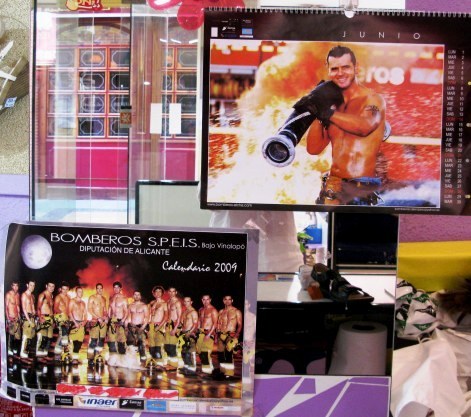
The tradition is for people, pretty girls especially, to dance forward and taunt the firemen with insults until they are sprayed with the fire hoses …also catching the surrounding crowd.
For locals a happy ending is to leave the burning of the statues soaking wet…something I happily avoided.
Beach bonfires in Alicante
After La Crema, everyone troops down tot he beach to continue the celebrations with their own bonfire and traditional good luck swim in the sea after leaping the fire.
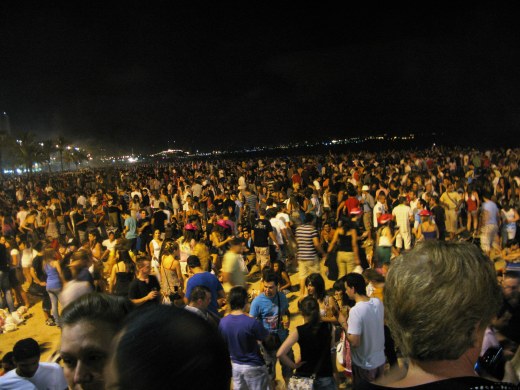
It is hard to find a space on the beach for a fire because early birds reserve their space.
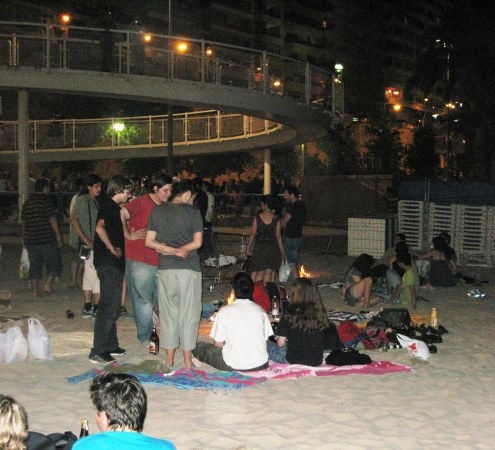
Later hundreds of people are leaping fires before their dip.
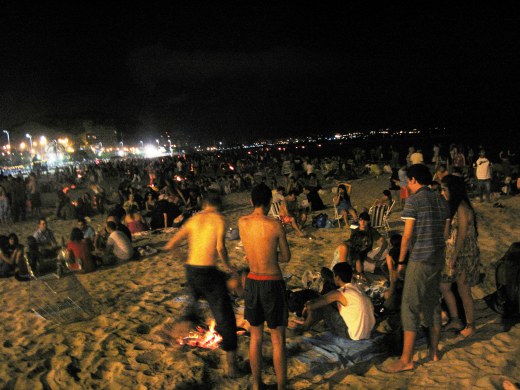
Not having our own fire, we asked use of one…
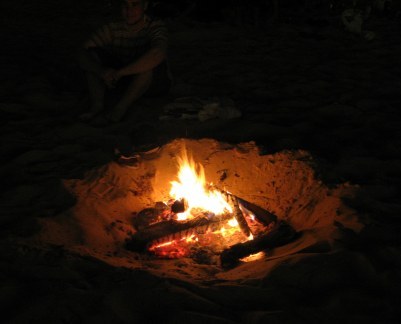
..duly leaped and then swam.
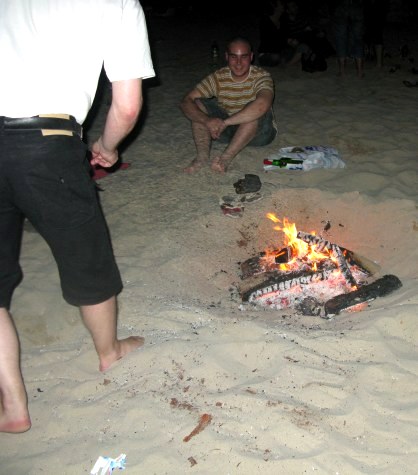
Alicante is a passionate city, a beautiful city, and a cosmopolitan city.
Most of all it is a friendly city.
All the parades and fiestas, the small gatherings of friends there, and the time in my intensive Spanish course at Alicante’s PROYECTO ESPAÑOL reinforce that it is not necessary to make big celebrations, wonderful as they may be, but to celebrate the small moments of friendship.
Celebrations of friendship
consolidate bonds that endure beyond the moments shared
– and surely these are the things that define your life.






